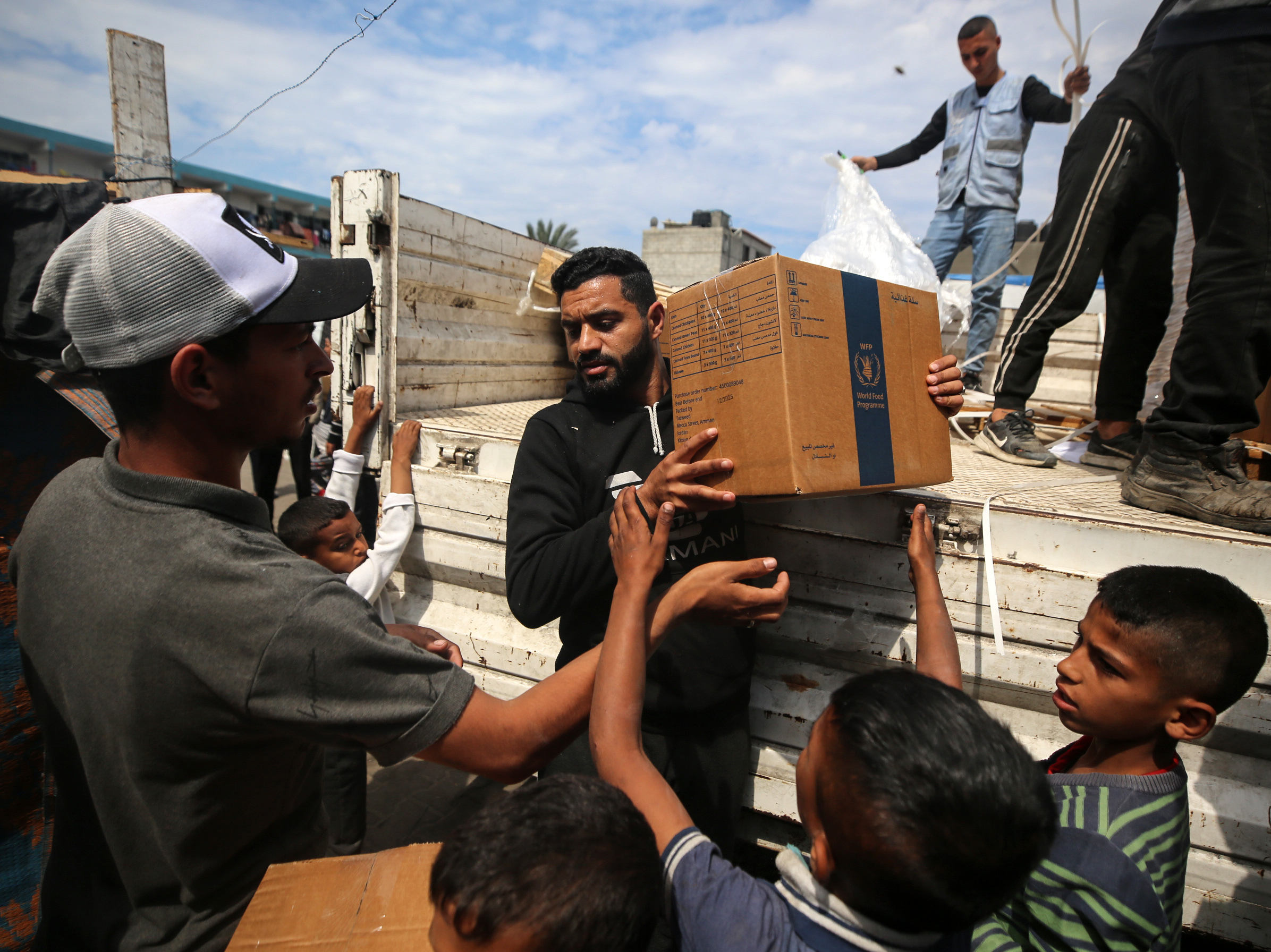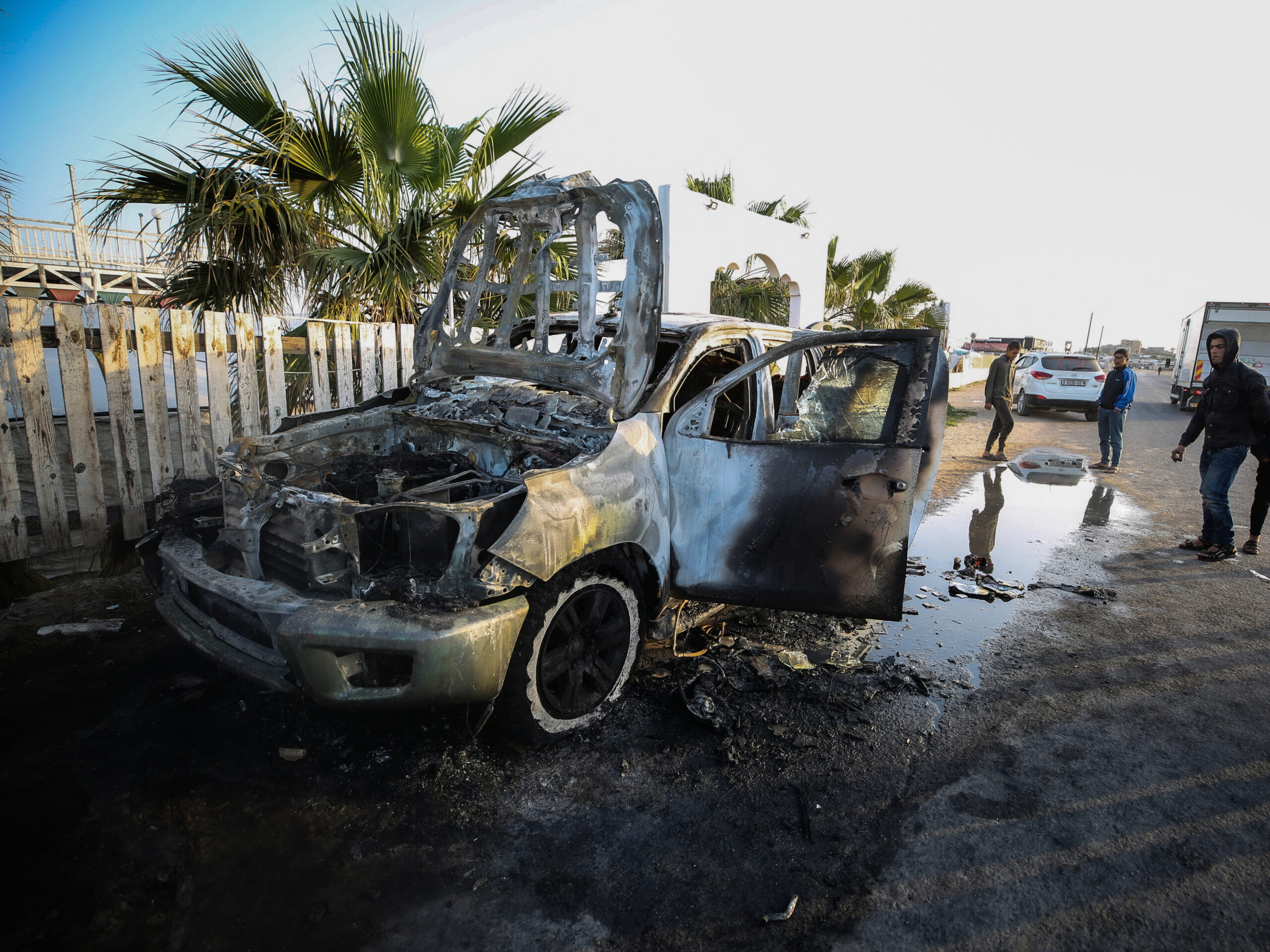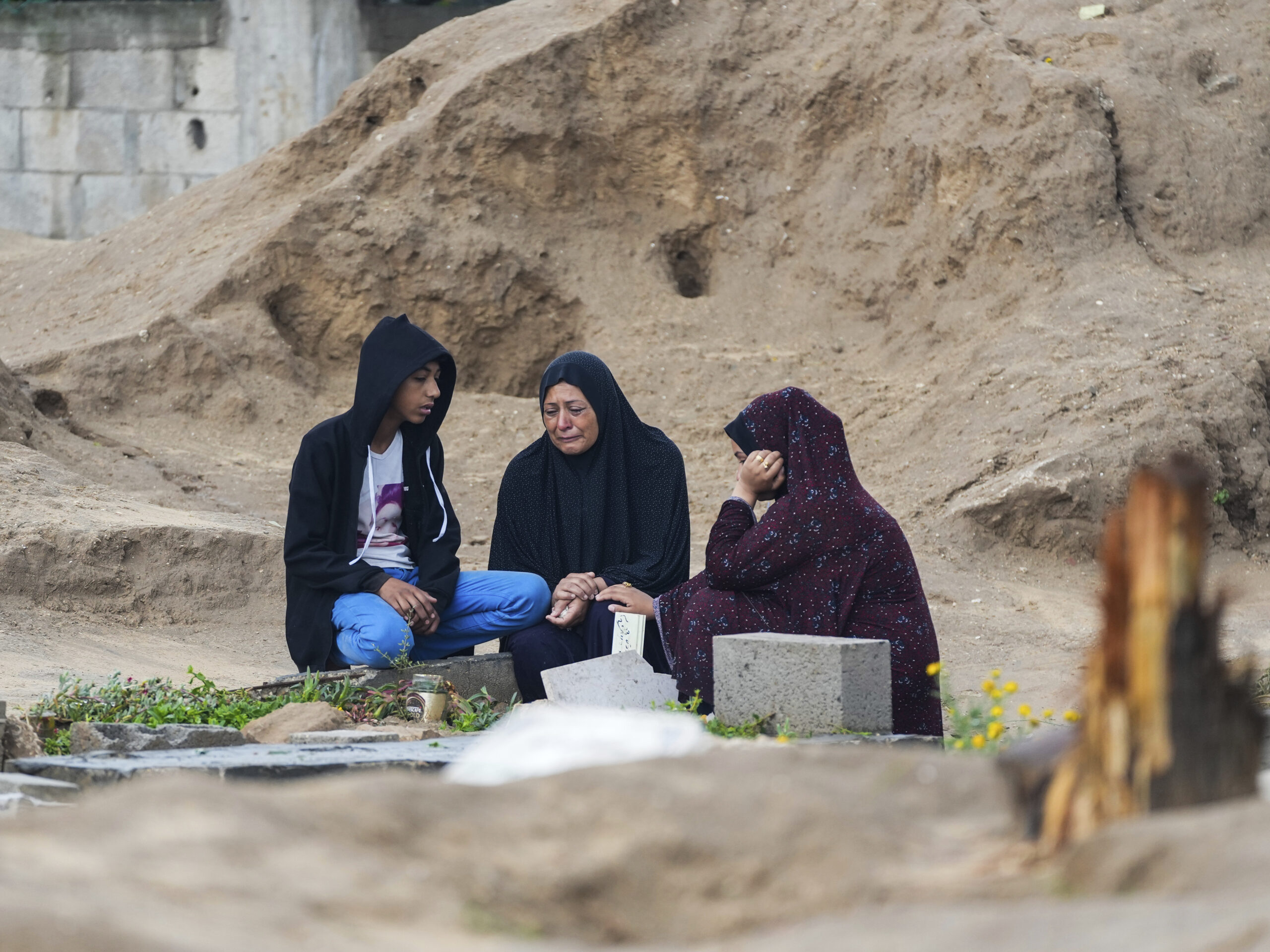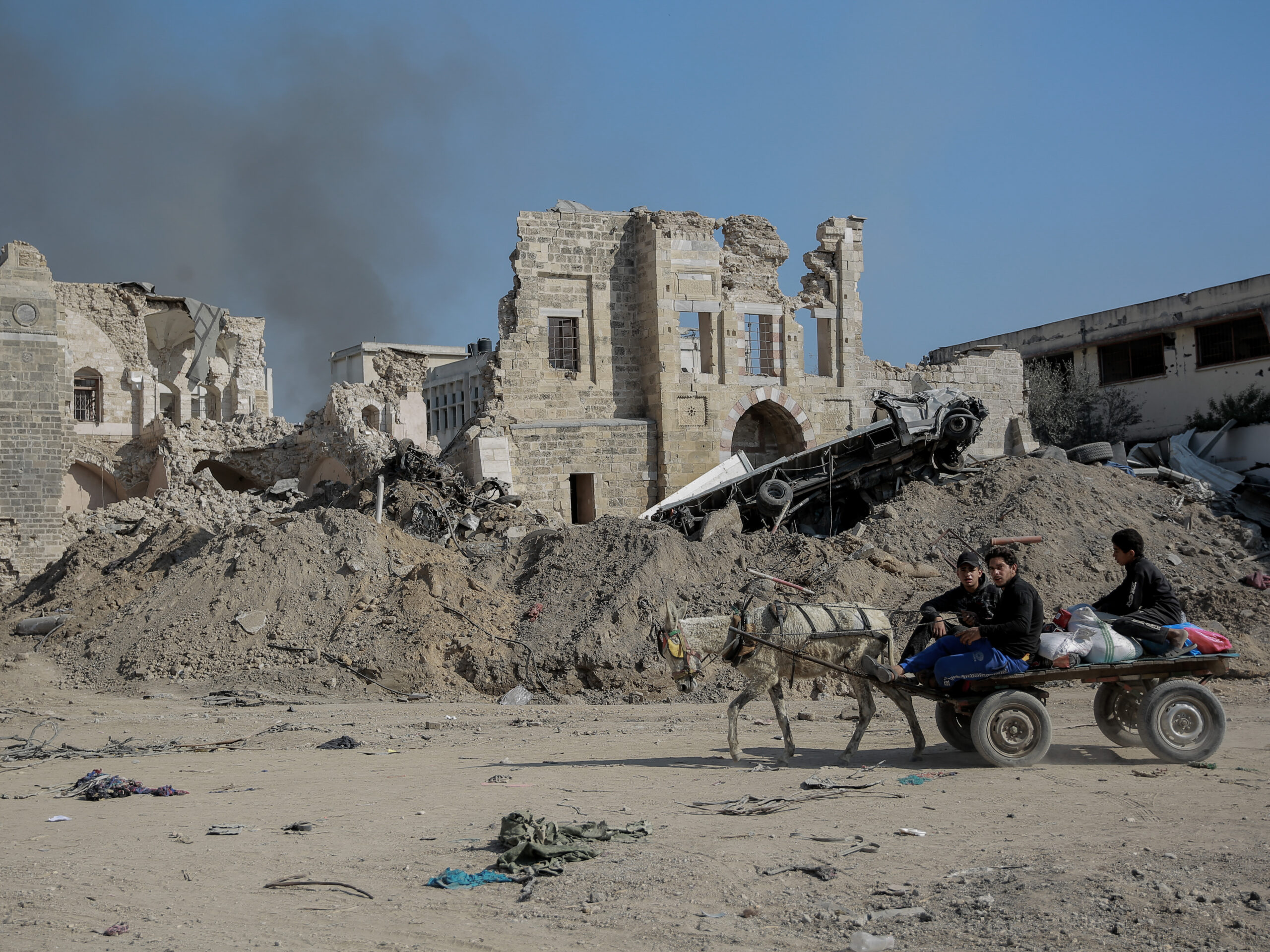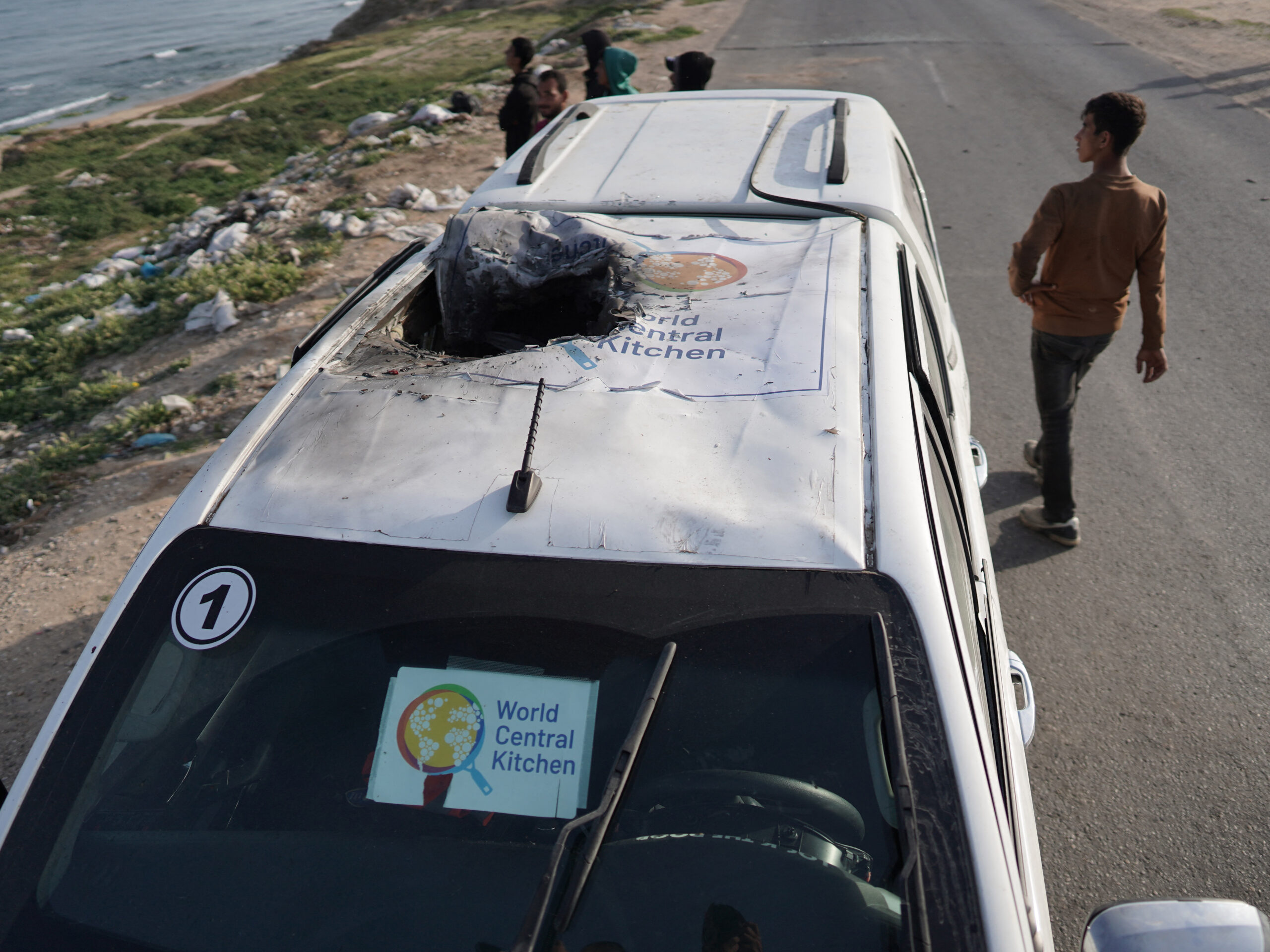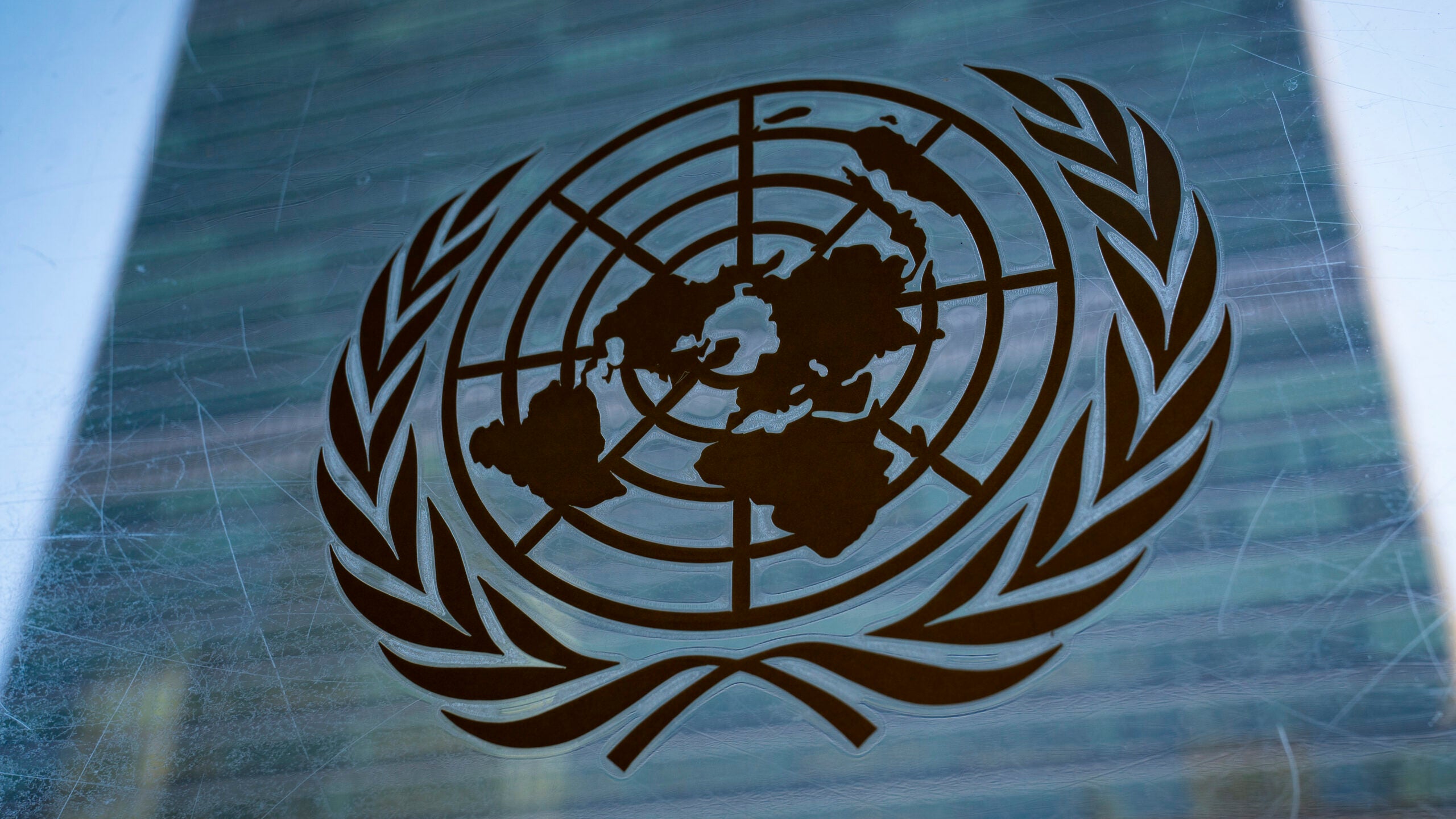The killing of seven humanitarian aid workers in an Israeli airstrike in Gaza last week left serious questions hanging over the future of aid delivery to the Gaza Strip.
Following a phone call between President Biden and Israeli Prime Minister Benjamin Netanyahu after the deadly attack, Israel pledged to open up another border crossing in the north of the Gaza Strip. It has not yet said when that new crossing will open.
However, the Israeli military agency that oversees Palestinian civilian affairs, known as COGAT, said in a statement Monday that 419 aid trucks had been cleared for entry into Gaza, “the highest number of aid trucks that entered Gaza in one day since the start of the war.”
Stay informed on the latest news
Sign up for WPR’s email newsletter.
Before the current conflict, around 500 trucks a day entered Gaza to supply the population of more than 2 million people, who have been isolated from the world since a Hamas takeover in 2007 prompted Israel, together with Egypt, to impose a blockade on the coastal strip.
Aid groups and U.N. experts have warned that people are beginning to starve there after six months of war and blockade. According to a United Nations humanitarian affairs report, 28 children have already died of malnutrition and dehydration.
José Andrés, the Spanish-born chef who founded World Central Kitchen to deliver food to people in need in war zones and natural disasters, issued a scathing response to Israel’s airstrike that killed its seven workers last week, which Israel has called a “tragic mistake.”
“The Israeli government needs to stop this indiscriminate killing,” Andrés said on social media platform X. “It needs to stop restricting humanitarian aid, stop killing civilians and aid workers, and stop using food as a weapon.”
But estimates of exactly how much aid is being allowed into the isolated coastal enclave have varied wildly.
Most aid groups estimate that there are generally between 3,000 to 7,000 trucks currently waiting to be allowed into the Gaza Strip after Israeli and Egyptian inspections for anything that might be used by Hamas in their battle against the Israeli military.
One Jordanian official, Ahmed Naimat, a spokesman for that country’s National Center for Security and Crisis Management, claimed recently in an interview with NPR that there were as many as 30,000 trucks waiting at the Rafah crossing on Gaza’s southern border with Egypt to get in. He did not provide the satellite images upon which his figure was based. NPR’s own examination of satellite images of the Rafah border crossing and truck holding areas did not support that claim.
Israel denies that it is restricting aid deliveries to Gaza.
“There’s no imminent famine. I think that’s a complete lie and fabrication,” Israel’s Minister of Strategic Affairs Ron Dermer told NPR’s Leila Fadel last month.
“That’s a libel against Israel. You are taking — not just you, but the world is taking Hamas Health Ministry statistics at face value, and propaganda from U.N. organizations that are there in Gaza.”
Israel blames the problem of food distribution on Hamas, whose Oct. 7 assault on Israel was the deadliest attack in the country’s history. Hamas militants’ surprise assault on southern Israel killed around 1,200 people. Militants kidnapped more than 240 others, according to Israeli officials. About half of those kidnapped continue to be held hostage.
The Hamas attack prompted Israel’s deadliest war on Gaza as it sought to wipe out the Palestinian militant group, which the U.S. and Israel designate a terrorist organization. The war has killed more than 33,000 people in Gaza, according to Gaza health officials. Entire areas of Gaza have been reduced to wastelands. Most of the population has been displaced.
Dermer, who is a close aide to Prime Minister Netanyahu, said that according to an Israeli military analysis there are sufficient amounts of food getting into Gaza.
“It’s 3,000 calories per person in Gaza. So even if half of that is destroyed for some reason, you’d have 1,500 calories a per day per person in Gaza,” he said in his interview with Morning Edition host Fadel.
Aid groups and famine experts dispute that, warning that in northern Gaza in particular, famine is imminent.
“Famine is projected to occur anytime between now and May 2024 in the northern governorates,” the U.N. expert panel on famine, known as the Integrated Food Security Phase Classification or ICP, said in a report last month.
The charity Oxfam International said last week that people in northern Gaza are surviving on just 245 calories a day — “less than a can of beans” and less than 12% of their average daily calorie needs.
NPR has reported on some Palestinians who have been reduced to eating animal feed and succulents that grow in the wild in northern Gaza.
Alex de Waal, who leads the World Peace Foundation at Tufts University, is an expert on humanitarian crisis response and famines. He said that Israel was putting too many bureaucratic roadblocks in the way of aid trucks getting into Gaza.
“The restrictions on the — on who’s allowed to operate and what aid can be brought in are so onerous that this famine is being allowed to develop really without being checked,” he told NPR’s Ailsa Chang.
9(MDAyMjQ1NTA4MDEyMjU5MTk3OTdlZmMzMQ004))

